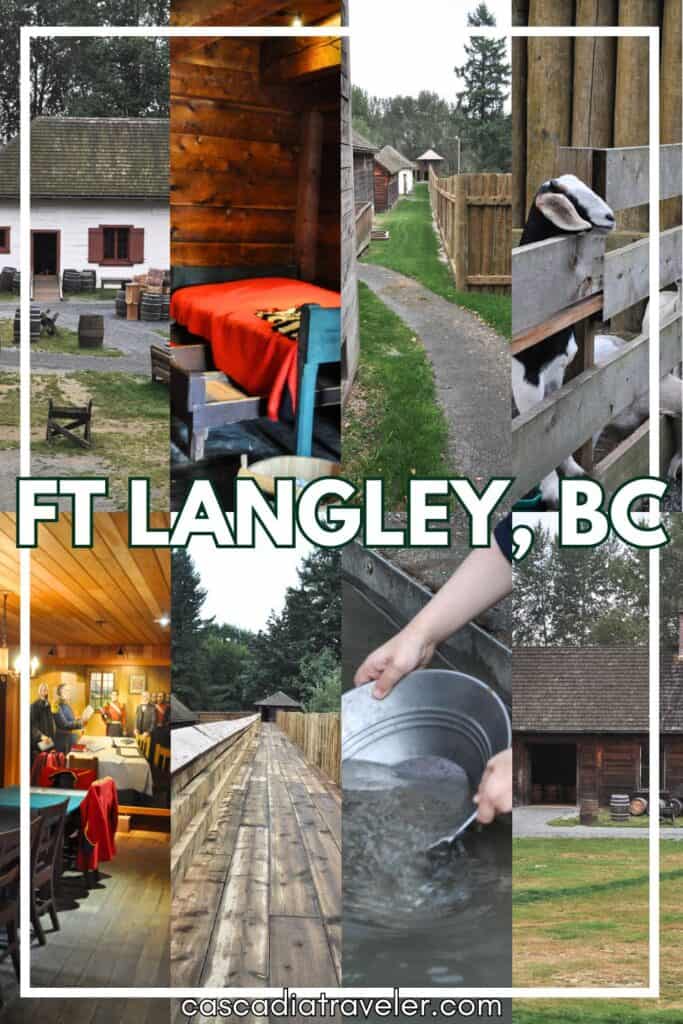Step into the Past: Exploring Ft. Langley, B.C.
Fort Langley National Historic Site is an interesting and fun place to explore for a couple hours, with or without kids.
Popular as a field trip destination for local schoolchildren, it’s also a great spot for a homeschool field trip or just because.
From its origins as a Hudson’s Bay Company fur trading post to its role in the establishment of the Colony of British Columbia, Fort Langley played a significant role in 19th century B.C. The historic site includes a mix of original buildings and reconstructions.
Activities and Events at Fort Langley
You are welcome to wander the site on your own and check out the buildings and displays. If you want a more structured experience, here are some options:
Self-Guided Audio Tour
The audio tour provides a fascinating insight into the history of the fort and the people who lived and worked here. You can explore the historic buildings, including the blacksmith shop, cooperage, and trading post, and learn about the fur trade era.
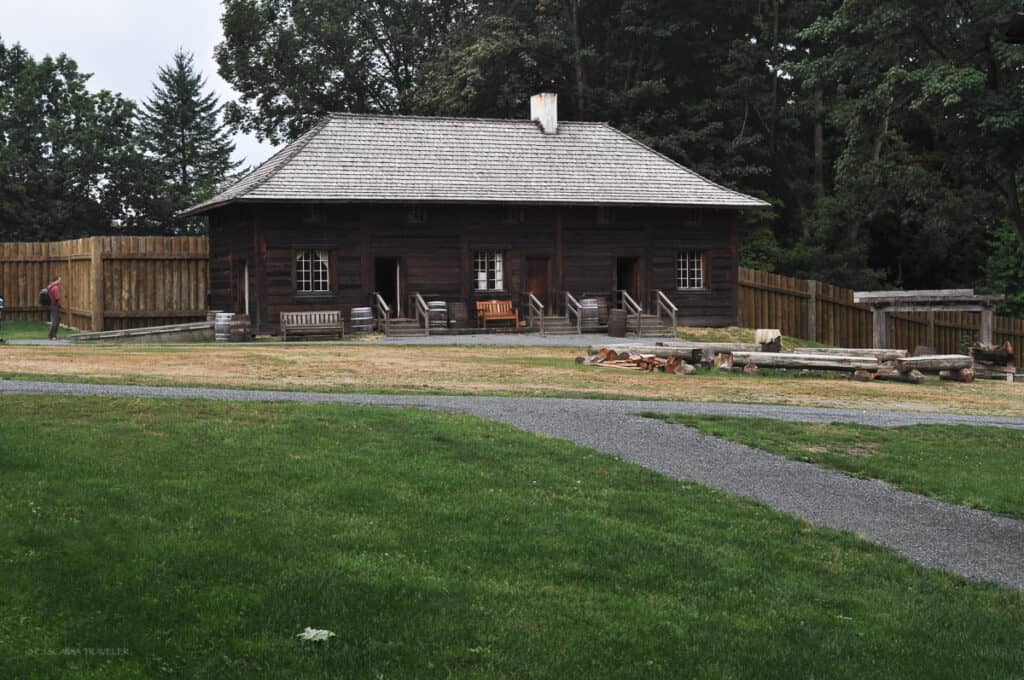
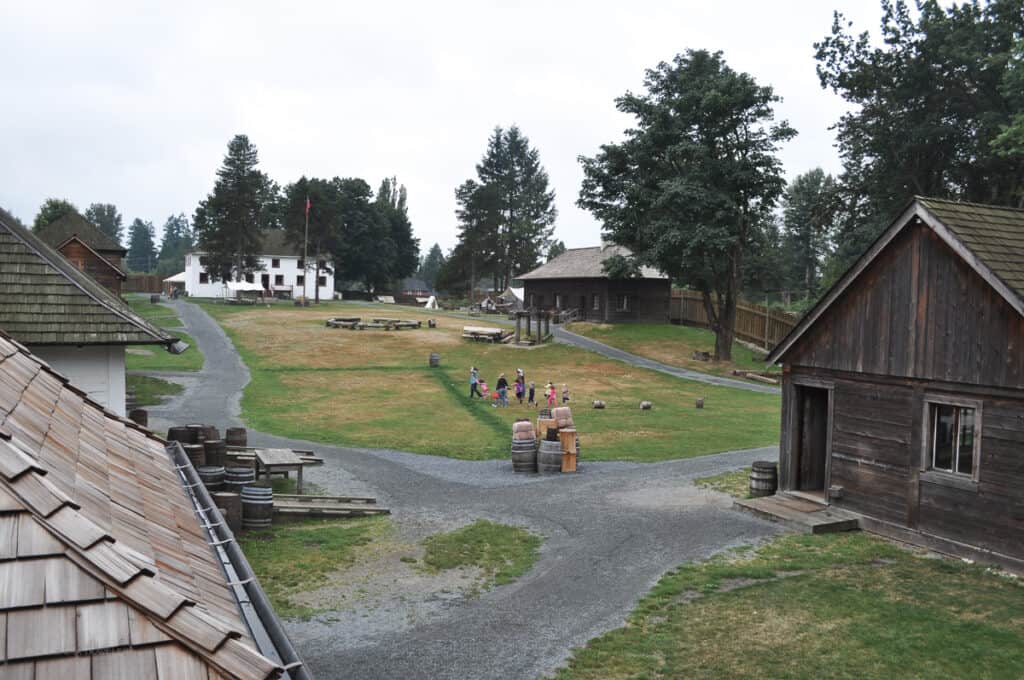
Costumed Interpreters
Another highlight of the Fort is the costumed interpreters. These knowledgeable guides are dressed in period costume and provide a wealth of information about life at the fort during the fur trade era.
They are happy to answer any questions you may have and provide a unique and immersive experience. At one visit, a blacksmith made a twisted metal hook and gave it to one of the kids.
Children’s Play Area
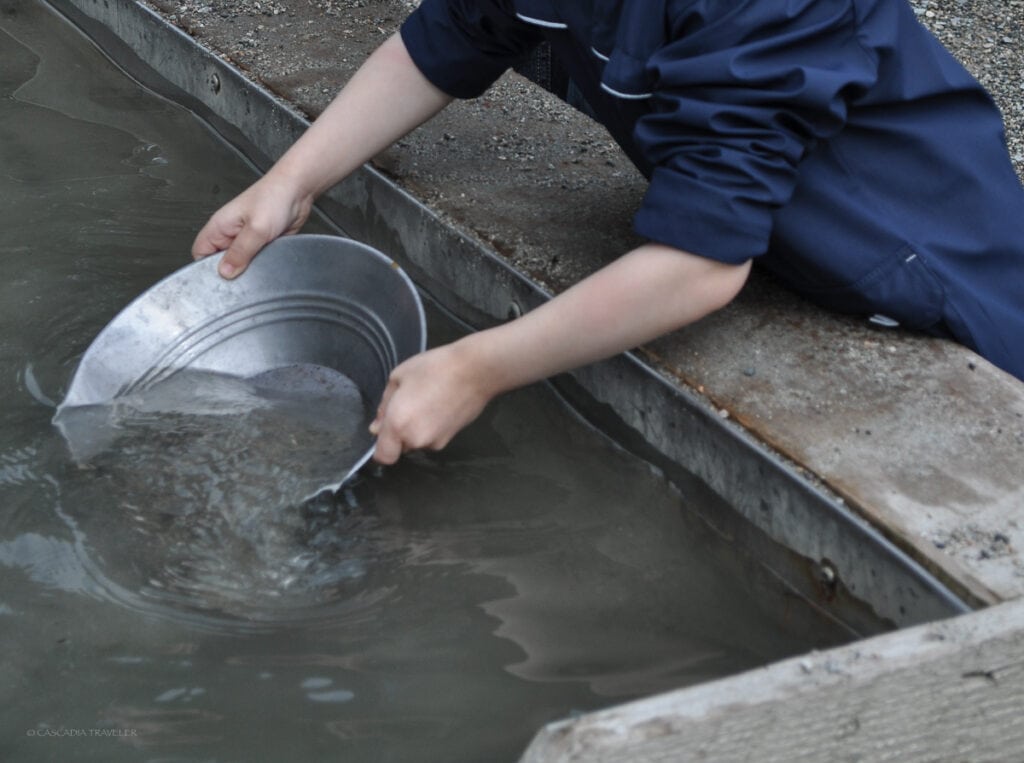
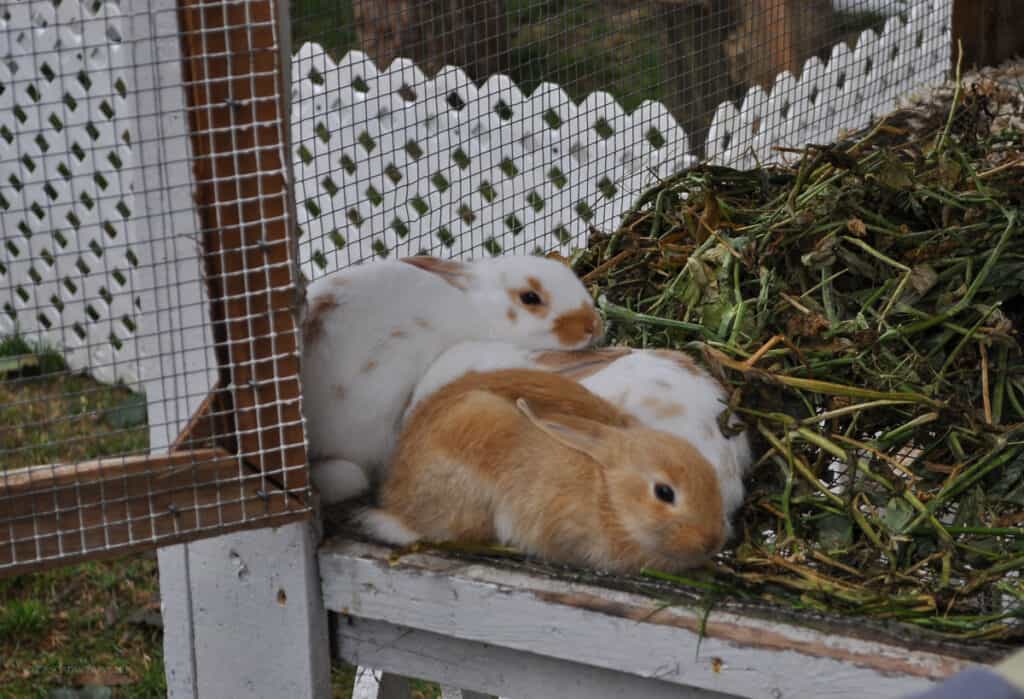
Speaking of kids, if you’re visiting with children, be sure to check out the children’s play area. This area is designed to provide a fun and interactive experience for kids, with hands-on activities and games that teach them about the history of the fort.
There are areas and activities for both toddlers and older kids. One popular option is to try your hand at gold panning.
Calendar of Events
Throughout the year, the fort hosts a variety of events, including cultural festivals, music concerts, and historical reenactments. These events provide a unique and entertaining way to learn about the history of the fort and the people who lived and worked here.
Be sure to check out the calendar of events at Fort Langley before you go for the latest happenings.
Camping at the Fort
If you’re interested in camping at Fort Langley National Historic Site, consider staying in an oTENTik (a cross between a tent and a cabin). This is a unique way to spend the night and is similar to the yurts in some Oregon State Parks. See the Parks Canada website for more information and reservations. There are only 5 available so plan ahead!
Historic Significance of Fort Langley
Fort Langley National Historic Site has a rich history that dates back to 1827 when it was established as a Hudson’s Bay Company fur trading post. The fort played a vital role in the trade between the British Empire and the Indigenous people who lived in the area.
Marriages between the men of the Hudson’s Bay Company and Indigenous women strengthened alliances and helped the fort to prosper, and provided Indigenous peoples with goods from Europe.
While the HBC were mostly interested in furs (especially beaver pelts for hats), the locals introduced new products like salmon and cranberries. These posed challenges for storage and shipping, but skilled workers at Fort Langley, such as coopers, played a crucial role in exporting goods. The cooperage is one of the buildings at the site and you may even catch a demonstration.
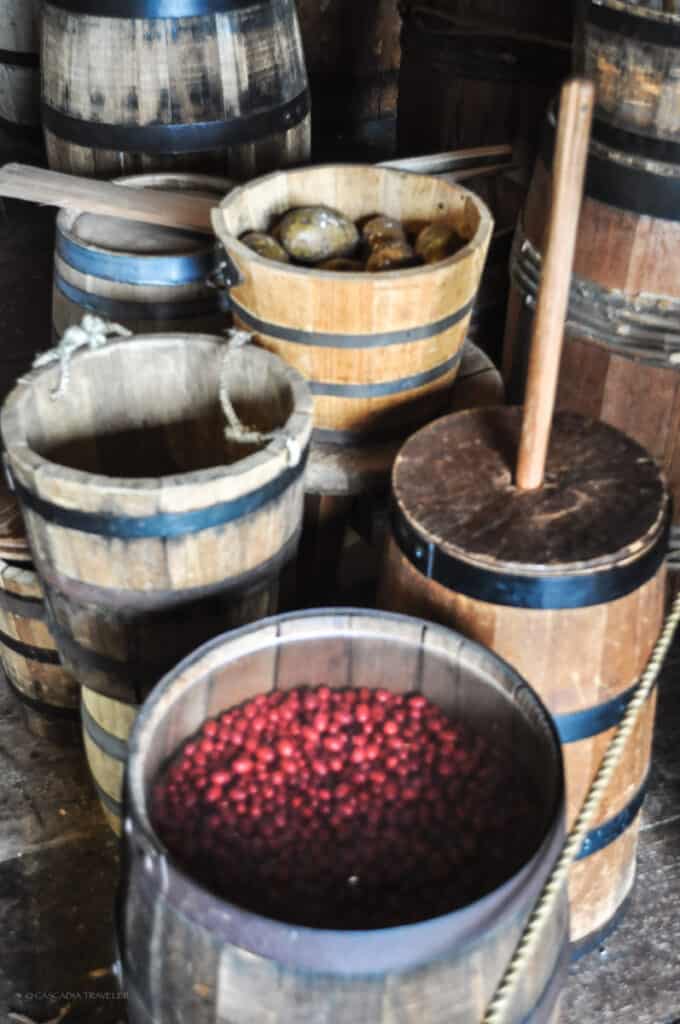
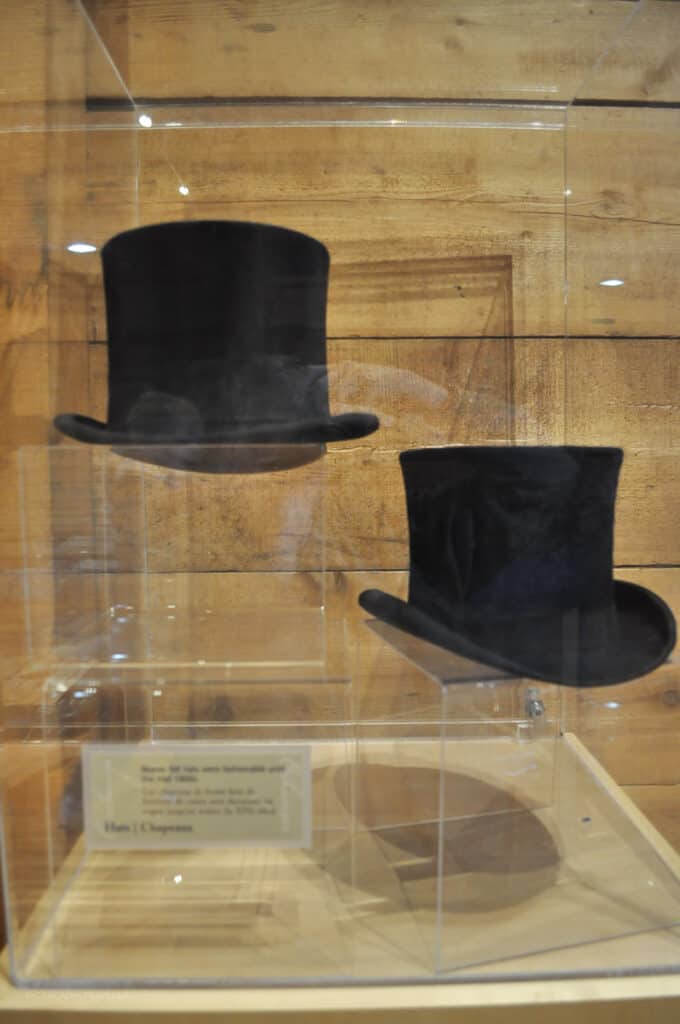
With the settlement of the border between Canada and the United States in 1846, Fort Langley became strategically important for keeping trade goods within British territory.
The discovery of gold in B.C. in 1858 transformed Fort Langley into a bustling center of the gold rush, attracting thousands of miners.
In response to the fear of American takeover, the British government established the Colony of British Columbia, with Governor James Douglas proclaiming it at Fort Langley. Yes, that’s right, B.C. was born here.
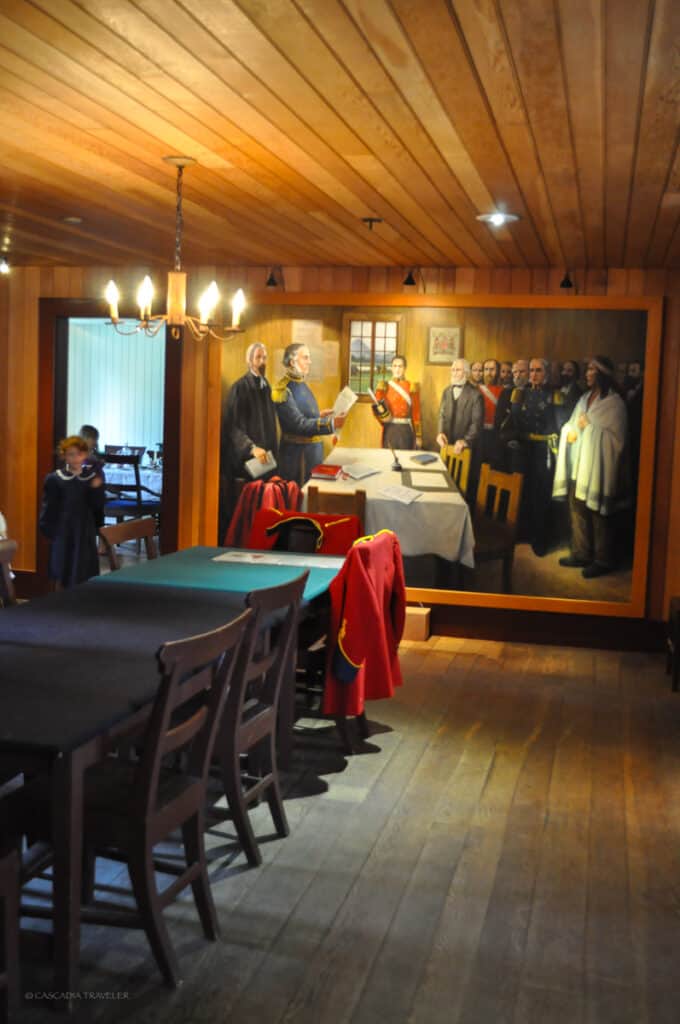
Over time, as British Columbia grew and changed, business at Fort Langley declined. However, its historical significance led to its designation as a national historic site in 1923. Today, Fort Langley National Historic Site is managed by Parks Canada and is part of Canada’s heritage, preserving its story for future generations.
Community of Fort Langley
Fort Langley is a historic site, but there is also the village of Fort Langley, an area with shops and restaurants and residential neighbourhoods adjacent to the Fraser River.
Shops and Restaurants
Fort Langley is home to a variety of unique shops and restaurants. Local boutiques offer everything from handmade jewelry and soaps to vintage clothing. The community also has a thriving food scene, ranging from coffee cafe’s to 1950’s themed diner to international cuising.
Fort Langley Community Hall
One of the most iconic buildings in Fort Langley is the yellow Community Hall, which has been featured in many TV shows and films. This historic building has been a gathering place for the community for over 80 years, and still hosts events and activities today.
I was lucky enough to attend a local farmers market during one visit, and on another occasion the area was being used for filming that very day (I am not sure what they were filming).
 Kevin Philipson, CC BY-SA 4.0
Kevin Philipson, CC BY-SA 4.0 Trails and Parks
Fort Langley (the fort and the village) is right along the Fraser River. I went for a walk along the Fort-to-Fort Trail, which connects the village to nearby Derby Reach Regional Park. The trail offers peaceful views of the Fraser River and is an easy, family-friendly hike.
Trip Planner
How to Get There
The fort is located about 48 km from downtown Vancouver, and you can get there by car or public transportation.
How much time should I plan to spend in Fort Langley?
I would plan 2-4 hours at the Fort itself, depending on your level of interest in history. You can explore the fort, watch demonstrations, and learn about the fur trade.
If you’re interested in shopping, then plan an extra 1-2 hours for browsing the shops and boutiques in the village.
Add an additional 90 minutes if you want to stay for lunch or dinner.
If you plan to walk the Fort to Fort trail, it is about 8 km roundtrip. For the average adult at a moderate pace, allow 2 to 2.5 hours.
If you don’t live nearby, I recommend planning this as a day trip.
Hours of Operation
Fort Langley National Historic Site is open year-round from 10am to 5pm, but it may be closed for holidays, especially around Christmas and New Years or for special events.
Be sure to check the Parks Canada website for up-to-date information on hours of operation before heading out.
Facilities and Services
While exploring the fort, you’ll find a variety of facilities and services available to visitors. There are public washrooms, picnic areas, and a gift shop where you can purchase souvenirs and snacks.
Daily Visitor Fees
To visit the fort you’ll need to pay a daily visitor fee. The fee varies depending on your age and the time of year, but you can find current pricing information on the Parks Canada website. Youth’s 17 and under get free admission.
Accessibility
Fort Langley National Historic Site strives to be accessible to all visitors. There are accessible washrooms, parking spaces, and pathways throughout the site. Some of the historic buildings may have limited accessibility due to their age and construction, but there are still plenty of opportunities to explore and learn about the history of the area.
Weather in Langley
Ft. Langley is part of Langley B.C. and a suburb of Vancouver B.C. I grew up near here so I know the weather well! Here is the usual weather by season:
| Season | Temps | Precipitation |
| Winter | Near or just above freezing; -2 to 7 C (28-45 F) | Rain is always a possibility; occasional snow |
| Spring | Milder; can vary from 7 C to 20 C (45-70 F) | Still rainy into March; April to June can be wet or pleasant & sunny |
| Summer | Warm to hot; 15 C to 30 C (60-90 F) | Rarely |
| Fall | Early fall is mild, cooler into November; 7 – 22 C (45-72 F) | Some rainy days, especially into November |
